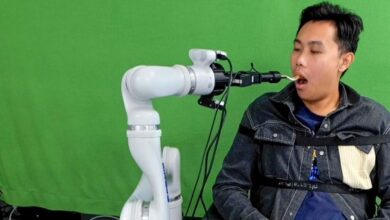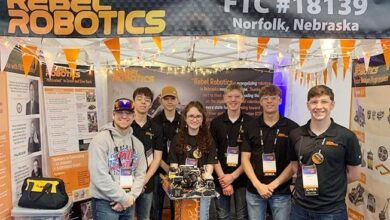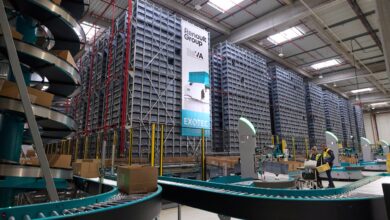World’s 1st “edible robot” offers researchers feast of insights
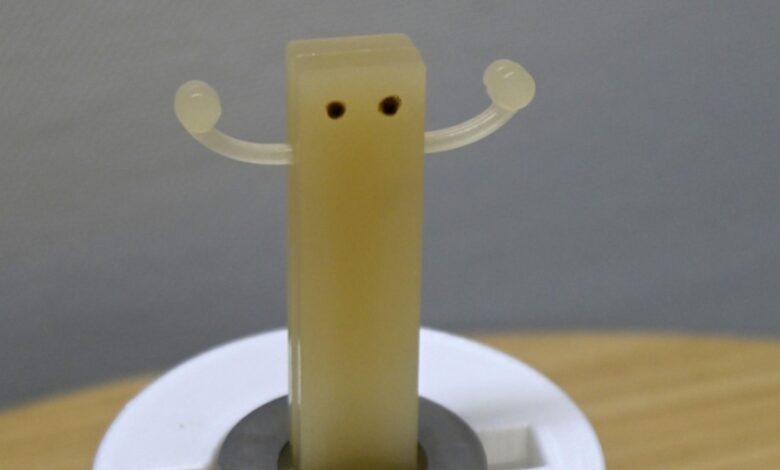
A cloudy yellow rectangular figure about seven centimeters long wobbles from side to side, waving its gelatinous arms as it makes a friendly greeting, its body resting inside a mug.
“Hello. I was looking forward to speaking with you today,” says the figure, which was successfully developed by Yoshihiro Nakata, an associate professor of robotics at the University of Electro-Communications and his team of researchers.
The wobbly character is not just an apple-flavored gummy candy but also the world’s first “edible robot.” While the edible part of the robot consists only of a gelatin-based chewable sweet, it is powered by robotics from its base to give it its lifelike quality.
Photo taken on February 28, 2024, in Chofu, western Tokyo, shows the world’s first edible robot developed by Yoshihiro Nakata, associate professor at the University of Electro-Communication, and his research team. Air pressure is used to make the stick-shaped, gelatin-based gummy jiggle on the 3D-printed mug. The robot was developed to study the effects of eating food that looks like it is alive on human psychology. (Kyodo) ==Kyodo
With tiny black dots for eyes, the robot’s edible body is attached to a stainless-steel metal bolt placed inside a 3D-printed mug. Chambers inside the gummy fill with air and connect to a pneumatic tube at the base of the apparatus to set the creature in motion, while the audio comes from a speaker connected to the device.
But what on earth, you may be wondering, is this for? The goal, says Nakata, is to offer up edible robots as a “new culinary experience.”
Nakata was partly inspired by Anpanman, a well-known Japanese children’s superhero comic book and anime character who takes the form of an anthropomorphized red bean paste-filled pastry.
Throughout the series, Anpanman often sacrifices himself for his hungry pals by ripping off parts of his face to feed them. For Nakata, this captures the idea of changing people’s perceptions through food, the driving concept behind his project.
“When Anpanman tears off his face and gives it to someone, it is depicted as tasting even better than usual, and giving people energy,” he said, emphasizing that he believes the way people interact with food may cause changes in their sense of taste and texture and produce different psychological and cognitive effects.
For the research, Nakata collaborated with researchers from Osaka University and also drew inspiration from the traditional Japanese culinary practice of “odorigui,” (literally meaning “dancing eating”) which involves eating live seafood as it moves.
Seafood consumed while still living can include octopus, squid, lobster, clams, shrimp and ice gobies. By throwing robots into the mix, Nakata wants to push the boundaries of odorigui, curious about whether the robot’s movements could trigger a change in people’s perception of taste.
He created the stick figure robot in 2022 to conduct an experiment that sought to analyze participants’ perceptions, both when the stick figures were in motion and when they were stationary.
Sixteen people ate the figures containing the same ingredients of gelatin and sugar, both in motion and while stationary. The participants then selected what textures best described each experience.
Many selected a word describing the experience of eating chewy food when describing the texture of the still robots, while a word used to describe something springy and a bit hard was selected for the robots that were in motion.
The researchers concluded that “the texture experienced while biting and chewing the animated robots was different from those in a stationary condition.”
The robots did not yet have arms or facial features when the experiment was conducted, but perceptions such as freshness, sentience, and even guilt were felt more intensely by the participants when the robots were moving compared to when they were motionless.
Perceptions of taste and texture are thought to vary significantly from culture to culture, and academic literature has gone as far as to speculate that morality and feelings of guilt resulting from eating live creatures could have an impact on how people taste their food.
But as Nakata and his team soon discovered, studying these subtle cultural differences can be devilishly difficult.
In a 2023 experiment, the team focused on whether people’s opinions of robots affected their sense of taste. Thirty-five people answered moral questions beforehand and compared eating the robots that were ascribed the same opinions as them compared to those that were given different views.
They set out to test whether if participants shared the same opinions as their robots, they would develop empathy for them, making them taste “sweet,” but no statistically significant difference was identified. However, a small number of people did perceive a difference in sweetness, despite the ingredients being the same.
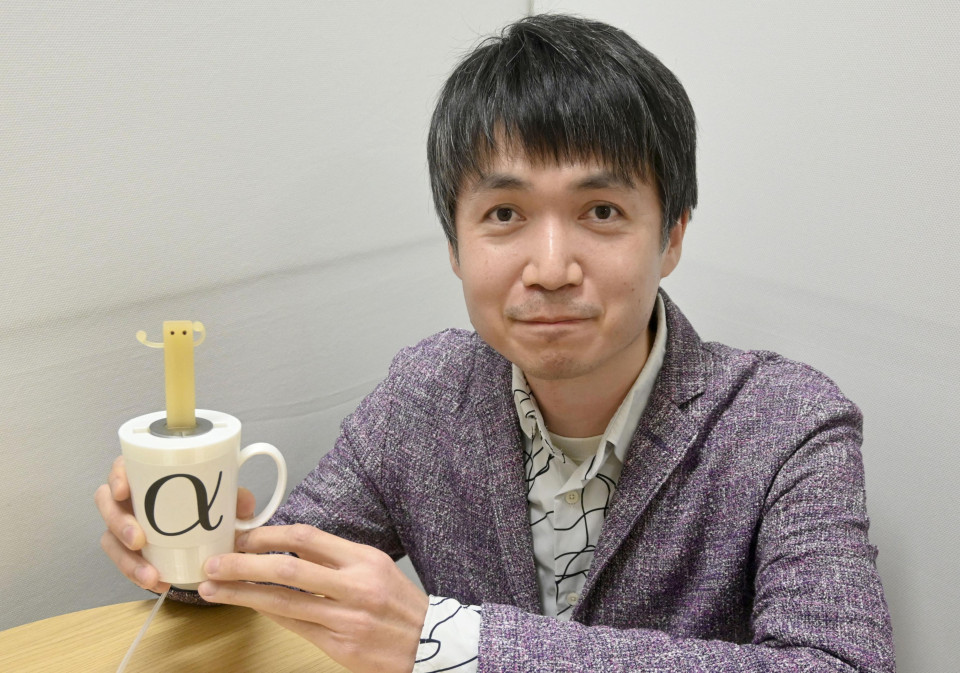
Photo taken in February 2024, in Chofu, western Tokyo, shows Yoshihiro Nakata, associate professor at the University of Electro-Communication, holding the world’s first “edible robot.” (Kyodo)
“It suggests that interactions with the robots could have an impact on perception,” said Nakata, who speculated that the reason his team’s hypothesis did not hold up was that “if they shared opinions (with the robots) then some probably felt guilty about eating them,” and likely did not find them sweet.
He added, “How empathy works on one’s sense of taste may vary greatly from person to person, and we did not organize the conditions of the experiment well enough to determine this.”
From the two experiments, Nakata and his team feel they were able to glean that when people perceive robots as communicable, they can sometimes develop a degree of emotional attachment to them that can affect their sense of taste.
Nakata and his team hope that if they can confirm this mechanism in humans, it could help people get used to eating food they dislike with the assistance of robots. They aim to apply their ongoing research to the culinary arts, with a focus on gastronomy and medicine.
Related coverage:
Fans bid farewell to giant moving Gundam in Yokohama
Japan startup reveals “world’s first” close-up space debris image
China deploys robot dogs during military exercise with Cambodia

